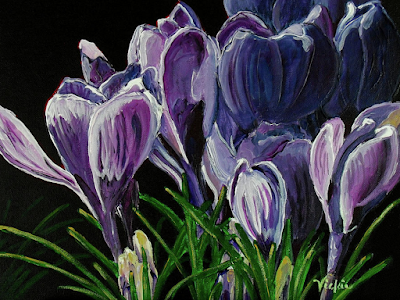Today, the final two snowdrops from the "Might Atoms" family covered elsewhere in the blog. Both are noticeable for their large flowers that stand out in a border. "Tubby Merlin" is slightly smaller than the second snowdrop featured here, or at least it is in my garden where they both sit close beside each other. I did see some in gardens this year that varied in size and I believe it is important for snowdrops to be in the sun for at least some of the time. Visiting Goldsborough Hall a week ago I enjoyed the increasingly varied collection planted in the shade, although I did feel that the differences of the various select varieties are not always shown to best advantage under the shadow of trees. It was discovered in Lower Slaughter in the Cotswolds in the 1960s. We were there a fortnight ago and if there are any there now they had flowered and gone home by the time we arrived.
"Bill Bishop" is clearly very similar to Tubby, though if one is squirming through the grass the differences in marking might be discerned. Mine is a little larger than its rotund cousin perhaps on account of the clump being established for an extra year. It has a longer pedicel than Tubby, the flowers hanging down in an attractively ponderous fashion on such a short stem. It has begun to increase with lots of baby Bills. It is known of as an early bloomer and in this season of seasons when winter never happened it has grown a tad confused and is now at its heavily laden height, or lack of it. Both these snowdrops are comparatively inexpensive and worth the modest investment.
"Bill Bishop" is clearly very similar to Tubby, though if one is squirming through the grass the differences in marking might be discerned. Mine is a little larger than its rotund cousin perhaps on account of the clump being established for an extra year. It has a longer pedicel than Tubby, the flowers hanging down in an attractively ponderous fashion on such a short stem. It has begun to increase with lots of baby Bills. It is known of as an early bloomer and in this season of seasons when winter never happened it has grown a tad confused and is now at its heavily laden height, or lack of it. Both these snowdrops are comparatively inexpensive and worth the modest investment.






























































